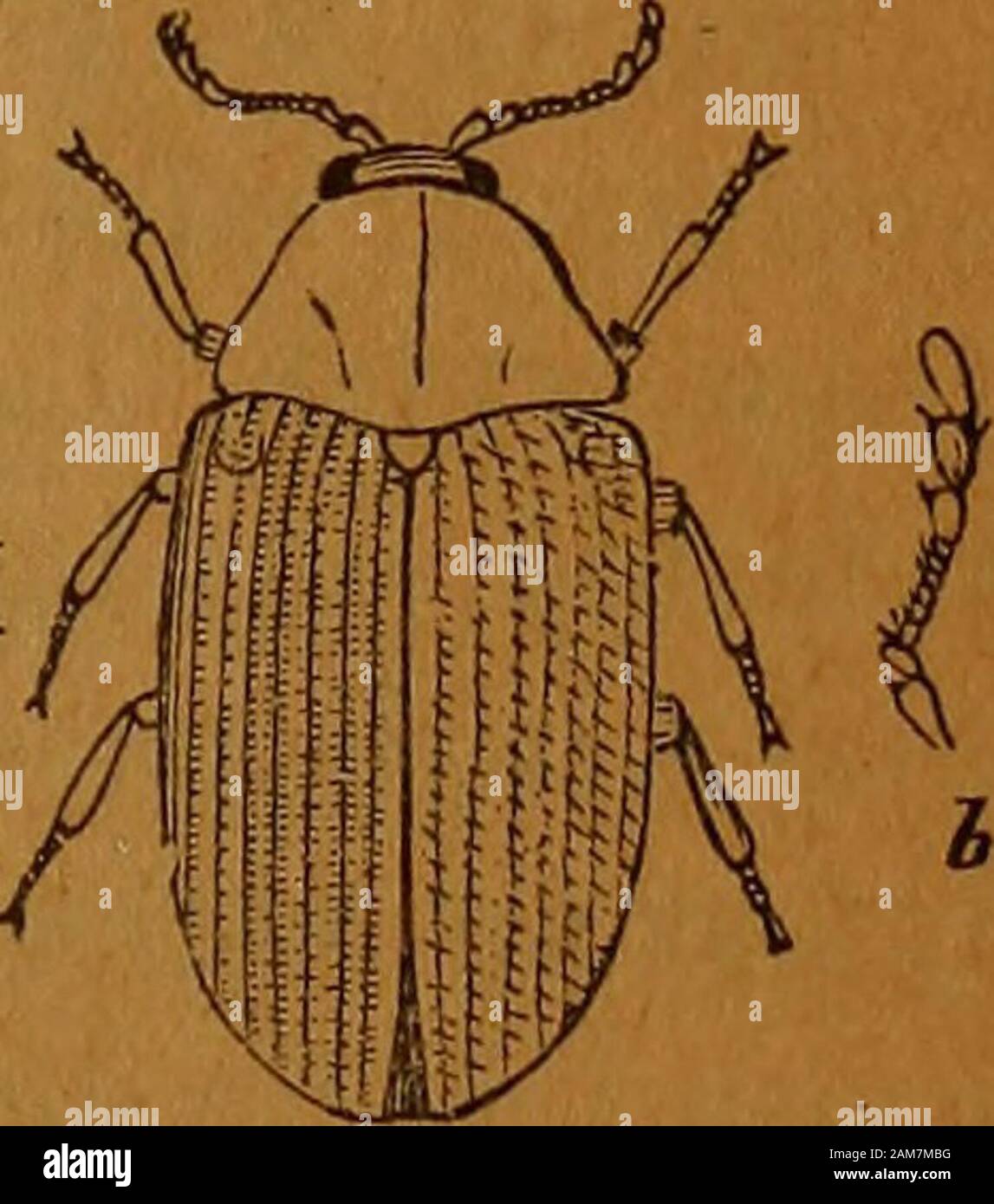Annual report of the Regents . for winter quarters. The beetle is represented in Figure 29. It is of a luteous color; itseyes are black. The thorax is marked with four black spots, thelargest of which is central near the hind margin. Thewing-covers have seven black spots, two of which arecommon to the two covers. It varies considerably in size— the largest measuringone-third of an inch in length. The larva is described as yellow, with long, brown,branched spines, arranged in rows of six on each seg- bird^EKiACHNAment, except the first thoracic segment, which has only bobbalis. (Afterfour. Its

Image details
Contributor:
The Reading Room / Alamy Stock PhotoImage ID:
2AM7MBGFile size:
7.2 MB (231.9 KB Compressed download)Releases:
Model - no | Property - noDo I need a release?Dimensions:
1485 x 1683 px | 25.1 x 28.5 cm | 9.9 x 11.2 inches | 150dpiMore information:
This image is a public domain image, which means either that copyright has expired in the image or the copyright holder has waived their copyright. Alamy charges you a fee for access to the high resolution copy of the image.
This image could have imperfections as it’s either historical or reportage.
Annual report of the Regents . for winter quarters. The beetle is represented in Figure 29. It is of a luteous color; itseyes are black. The thorax is marked with four black spots, thelargest of which is central near the hind margin. Thewing-covers have seven black spots, two of which arecommon to the two covers. It varies considerably in size— the largest measuringone-third of an inch in length. The larva is described as yellow, with long, brown, branched spines, arranged in rows of six on each seg- bird^EKiACHNAment, except the first thoracic segment, which has only bobbalis. (Afterfour. Its several stages, together with the Qgg, have °^°^<^^s-been described by Professor G. H. French in the Canadian EntomologistjXV, 1883, pp. 189, 190. In seasons of an ordinary abundance of this insect, it may be easilycontrolled by hand-picking, but in years of such an excessive mul-tiplication as above recorded, it is almost a hopeless task to attemptto attain immunity from its depredations. Fig. 29. — Thenorthern lady-. Sitodrepa panicea (Linn.), Beferring to the notice of this insect as a leather pest, in Report ivpp. 88-92, Mr. A. S. Fuller, of Ridgewood, N. J., hascalled my attention to a communication made byhim to The Hub, of March (?), 1873, under thehead of A Pest of the Trimming Shop. A firm of [carriage manufacturers, W. S. Bruce & Co., ofMemphis, Tenn., reported serious injury to the cur-tains, falls, and cushions of their carriages, from theborings of a worm, which, upon being submit- j^jqted to Mr. Fuller, accompanied by the beetle intowhich it developed, was identified by him as the well-known pest, Sitodrepa panicea. The following are extracts from the letters ofBruce & Co.: We have been troubled during the last few years in pur carriagerooms by a bug or worm, which not only destroys cloth linings, butalso eats the leather in tops, cushions, and falls, more particu-larly when there is paste, as in the facings of the cushions and thefalls. They bore little r